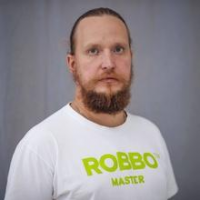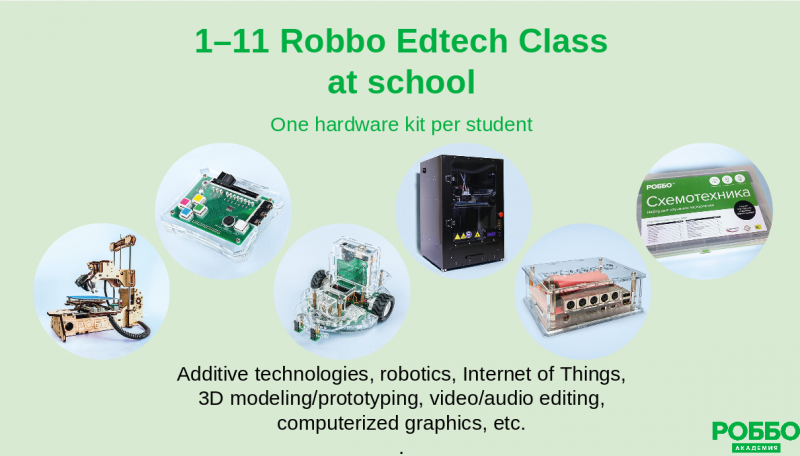ROBBO Class Part 1
This article features modernizing the education, using the nowadays technologies, that is, creating a school class of engineering innovation (SCEI). Robbo company manufactures appropriate equipment for SCEI. SCEI is based on free software and hardware. “Free” means that all components of the equipment used are shipped with open source software, with open circuitry, component lists, and manufacturing instructions. To maximize the effectiveness of training, each student is provided with their own set of equipment. SCEI activity involves additive technologies, robotics, Internet of Things, 3D modeling and 3D prototyping, software for video and audio editing, computerized graphics, etc.
The software is an important component of SCEI equipment. We use free software based on the GNU/Linux operating system. This software allows to solve three main tasks:
- educational part of educational process management;
- tech creativity for students;
- competitive programming.
The majority of the world programming olympiads for children are run under the operating system GNU/Linux, therefore, to be among the winners, it is important to learn how to use this operating system.
The next important point, apart from software, is the methodological support. The picture shows Robbo’s formula for free educational robotics — this is the formula 3×4×5×6, and its explanation is as follows.
3 means the three levels of education that we offer: pre-school, school, and professional;
4 means four freedoms of open robotics: freedom to use these products; freedom to study the working principles of products and to modify the products; freedom to make copies of our products and to distribute them; freedom to improve products, to create new products on their basis, and to publish improvements for public access to stimulate technological progress.
Further about the formula: 5 means five used educational technologies — these are gamification, project technology, differentiated training, activity approach, and productive training. Gamification is primarily important at the pre-school level: methods for studying the basic concepts in a ludic form have been developed. Older children start with creative programming, developing their own computer games. The project activity is the creation of mini-projects, then intermediate projects, and then a graduation project. Differentiated learning takes into account that different students have different levels of understanding and different background, that’s why the tasks of different levels of complexity have been developed, so that each student can be given a task that promotes them to the next level. The activity approach assumes active involvement of students in the tasks being discussed. Productive learning means that each lesson results in a mini-project.
The hardware components we use are Arduino-based kits for teaching microelectronics and circuitry, 3D prototyping center — an interesting solution for the SCEI, three-in-one, it is a two-head 3D printer where the heads can be replaced by a laser or a milling cutter. In fact, it is a mini-Fablab that introduces all the popular ways of processing materials, and additive production — add what you need and cut off what you need not, laser engraving and milling. There are 3D printers, specially designed for schools, Robbo mini that can be supplied as DIY kits. They can be used to teach 3D printing. Digital laboratory for mastering the Internet of Things — this is actually a web server on batteries; with it, you can go anywhere in the world, for example, in a botanical garden or in a forest, sensors are inserted in it, to perform the measurements, it runs a website that allows to get access from anywhere in the world to this little box and perform laboratory work related to measurements from these sensors. There is also a mobile robot that allows you to learn the basics of working with actors and the basics of mobile robotics. This is a digital laboratory that allows you to learn the basics of microcontroller’s interaction with sensors, and to introduce such concepts as “smart home”, “Internet of Things”.
Thus, the above-described equipment for the SCEI is necessary to train the future experts — innovation engineers for flagship companies that are going to hit the markets of the future.

